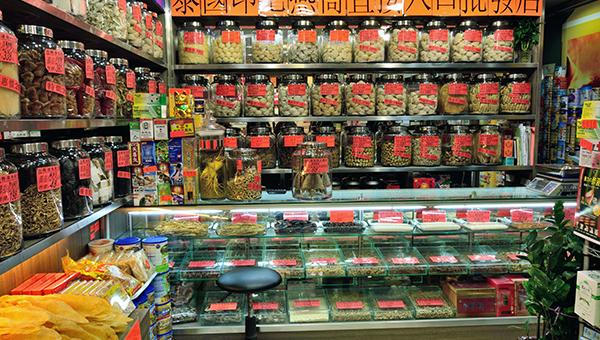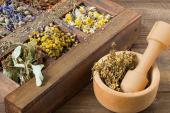Chinese Herbal Formula Matches Losartan in Patients With Mild Hypertension
A placebo-controlled RCT shows that SXC, a patent medicine, offers noninferior BP-lowering and may reduce cholesterol.

A Chinese herbal formula known as Songling Xuemaikang capsule (SXC) is noninferior to losartan when it comes to lowering blood pressure among patients with mild hypertension, results of a new randomized trial show.
This isn’t the first RCT to study SXC, a patent medicine that contains three components: Pueraria lobata, fresh pine needles, and pearl powder. Nor is the therapy novel. Back in 1996, it was approved by the National Medical Products Administration of China for the treatment of hypertension-related symptoms.
Yet this study stands out as being of higher quality than those before it, senior author Ying Gao, MD (Dongzhimen Hospital and Beijing University of Chinese Medicine), told TCTMD. “This is the first randomized, active-controlled, double-blind, noninferiority trial of traditional Chinese medicine (TCM) versus a first-line antihypertensive drug for BP-lowering in patients with essential hypertension,” she wrote in an email. “SXC could be an optimal alternative for mild hypertension, particularly for patients with a preference for natural medicine.”
SXC is already used by around 2.6 million hypertension patients in China each year, Gao said. One obstacle to uptake has been the formula’s cost, approximately 20% higher than the price of losartan, which “is a considerable concern for clinicians and patients,” she added.
Up to now, SXC has only been used in China, said Gao. “It is a big challenge for traditional Chinese herbal medicine with multiple active compounds [to be] used across the world. However, there are many patients with a preference for herbal medicine, particularly in eastern or southeastern Asian countries,” where she predicted SXC may prove popular.
Led by Xinxing Lai, MD (Dongzhimen Hospital and Beijing University of Chinese Medicine), and Zhenyu Dong, MD (Beijing Chao-Yang Hospital, Capital Medical University), the study was published online recently in Circulation: Cardiovascular Quality and Outcomes.
Hypertension is pervasive in China but often goes undiagnosed and untreated. Creative approaches like switching to salt substitutes and doing outreach at a village level have shown promise. Yet uptake of conventional antihypertensive drugs continues to be hindered by their side effects, the investigators note.
Similar BP, Lower Cholesterol
The researchers enrolled 755 patients with mild essential hypertension (systolic BP 140 to 159 mm Hg and diastolic BP 90 to 99 mm Hg) to participate in a 2-week placebo run-in period, during which 127 dropped out, mostly due to lack of written consent. Subsequently, the remaining 628 patients (mean age 53 years; 52% women) were randomized to receive either SXC or losartan for 8 weeks.
Based on intention-to-treat, the change in sitting diastolic blood pressure between baseline and 8 weeks, the study’s primary endpoint, was similar with SXC and losartan (-7.9 vs -8.1 mm Hg) and fell between the noninferiority margin of −2.5 mm Hg.
Both treatment arms saw quality-of-life gains, and while 24.9% of patients experienced at least one adverse event, the rate didn’t differ between the two therapies.
SXC led to greater improvements in total hypertension symptom score—a metric capturing “headache or heaviness of head, vertigo or tinnitus, palpitation, shortness of breath, chest pain, dizziness, edema, fatigue, polyuria, and neck or shoulder stiffness”—compared with losartan (-5.7 vs -5.0; P = 0.020). And, in what Gao described as a surprise finding, the herbal formula also provided a greater reduction in total cholesterol (-0.1 vs 0.1 mmol/L; P = 0.025). Thus, “SXC might be optimal for patients with the coexistence of hypertension and hypercholesterolemia,” she suggested.
Who Should Take SXC?
Gao said that based on what’s known now, “mild hypertension patients without preexisting cardiovascular diseases or uncontrolled diabetes might be the best candidates.” Additionally, she suggested, “SXC might be particularly beneficial for those with hyperactive liver-yang syndrome based on TCM theory, which is defined as the presence of at least three of six symptoms (headache, dizziness or vertigo, irritability, flushed face, red eyes, and yellow tongue coating).”
She cautioned that more research is needed on SXC’s effects when used for BP-lowering in special populations (eg, patients with secondary hypertension and pregnant or breastfeeding women), as well as its potential effects on MACE and kidney function.
Jing Li, MD, PhD (National Center for Cardiovascular Diseases, Beijing, China), writing in an accompanying editorial, praised the current study for “its rigorous design and operation.” For instance, the researchers took care in creating a placebo with the same look and smell as SXC.
“It is more challenging to ensure genuinely double-blind design in trials of Chinese herbal medicine than in those of Western medicine drugs,” she points out. “Traditionally, Chinese herbal medicine has to be decocted at home or by drug store, which is time-consuming. Some pharmaceutical companies make decocted potion into dried granule for the sake of convenience. However, the strong smell in either way of preparations makes it difficult to produce matching placebo and thus impedes the generation of reliable evidence for Chinese herbal medicine.”
Like Gao, she anticipates forthcoming trials to look at whether SXC’s effects on blood pressure translate into the prevention of MACE and protection of renal function. “In addition, since antihypertensive therapy would be lifelong and usually lasts decades, the long-term safety of SXC in a large population is important,” Li stresses. “As SXC has been approved by China Food and Drug Administration for more than a decade, the real-world data may provide valuable safety information.”
Caitlin E. Cox is News Editor of TCTMD and Associate Director, Editorial Content at the Cardiovascular Research Foundation. She produces the…
Read Full BioSources
Lai X, Dong Z, Wu S, et al. Efficacy and safety of Chinese herbal medicine compared with losartan for mild essential hypertension: a randomized, multicenter, double-blind, noninferiority trial. Circ Cardiovasc Qual Outcomes. 2022;15:e007923.
Li J. Traditional Chinese medicine in treating hypertension. Circ Cardiovasc Qual Outcomes. 2022;15:e008723.
Disclosures
- This study was funded by the Chengdu Kanghong Pharmaceutical Group.
- Lai, Dong, Gao, and Li report no relevant conflicts of interest.





Comments